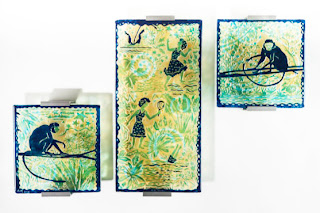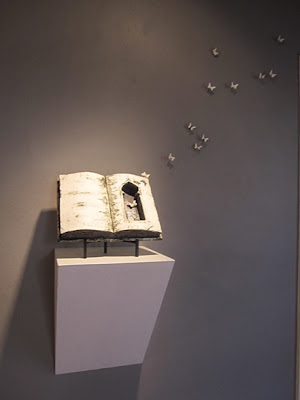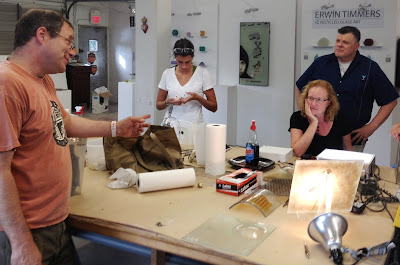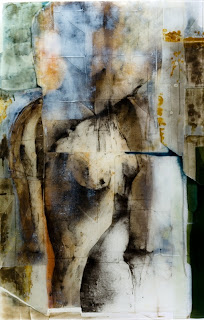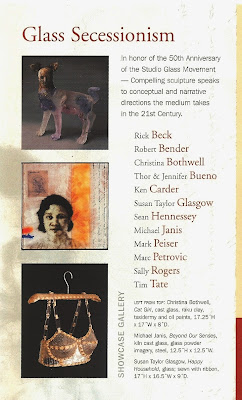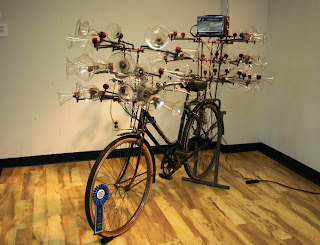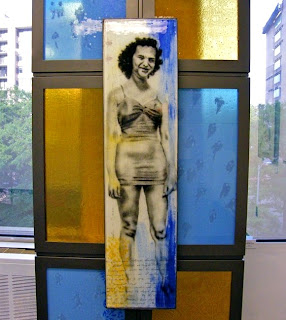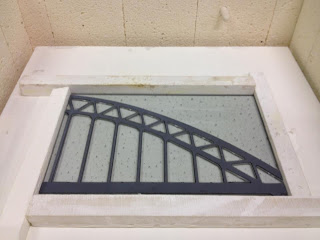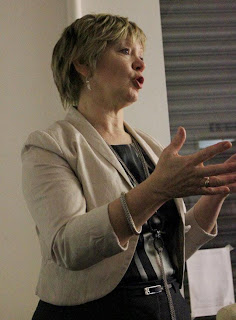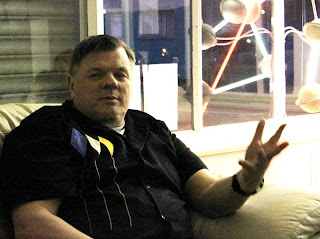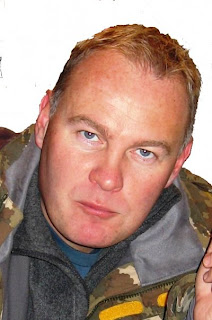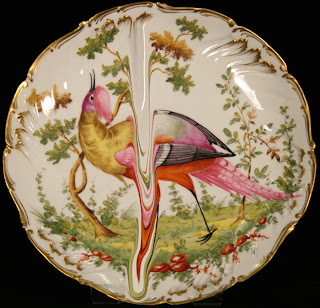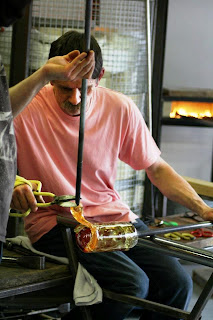>
Gateway artists and their work will be amongst crowds at the international art show SOFA CHICAGO, the annual arts expo devoted to Sculpture Objects and Functional Art (SOFA). Celebrating its 19th year, SOFA CHICAGO is one of the world's foremost contemporary art fairs, featuring nearly 70 art galleries and dealers from 10 countries along with special exhibits by renowned museums, universities and arts organizations, and an extensive lecture series.
Gateway Arts Featured at the SOFA include:
 |
| "Unhemmed" Ani Kasten, ceramic, reclaimed wood, plaster, photo by anythingphoto.net |
Ceramic artist Ani Kasten will have her work at Massachusetts’ Lacoste Gallery space (#508). Ani’s ceramic and mixed media work takes their influence from nature as well as the nature of change.
 |
| "Skyline", Ani Kasten, ceramic, reclaimed wood, plaster, photo by anythingphoto.net |
Infused with a modern, minimal aesthetic, her - amazingly structured and unstructured at the same time - work references the built world as well as reminding one of a natural or ancient object exposed to the rigors of time.
Glass Artists Allegra Marquart and Michael Janis are both featured at Georgetown’s Maurine Littleton Gallery space (#408).
 |
| "Gecko Gets Told" Allegra Marquart, sandcarved fused glass and enamel, photo by anythingphoto.net |
Allegra Marquarts’ colorful artwork delights in storytelling and mines fables and fairy tale for both content and imagery. Allegra sandcarves the panels of glass she fuses at the Washington Glass School, working on both sides of the glass slabs, playing with the translucent quality of the medium.
 |
| 3 separate works - "Flying in Place", "Lessons Learned and Unlearned", "The Optimism of Language", Michael Janis, fused glass imagery, silver and steel, photo by anythingphoto.net |
Michael Janis’ glass sculpture works are also at Maurine Littleton Gallery space His new works show how perceptions are based on perspective, where the mirrored glass cylinders refigure the distorted glass frit images into new shapes.
 |
| "Flying in Place" Michael Janis, photo by anythingphoto.net |
Both Allegra and Michael work from the Washington Glass School, located in Mount Rainier, MD.
 |
| "21st Century Dadaism", Tim Tate, cast glass, video, electronics, photo by anythingphoto.net |
 |
| detail "21st Century Dadaism", Tim Tate |
Another Washington Glass School artist – Tim Tate – is featured at Michigan’s Habatat Galleries space (#1100). Tim’s incredible mixed media works exploit the beauty of glass and invests it with a narrative that takes the work to a new level. One work – “21st Century Dadaism” incorporates video projection onto cast glass components, with the effect of producing a disembodied human face, created from the disjointed. If Dadaism had occurred today, it might have resembled this.
 |
| "Vegetable Peddler And Her Son", Tim Tate, cast and blown glass, photo by anythingphoto.net |
His other sculpture works, from a series he calls his “Cabinet of Curiosities”, incorporate cast glass elements made from the “lost wax” process are a delight in creating surreal worlds. This is a breakout year for Tim, whose work is currently on exhibit at Mesa, Arizona’s Mesa Contemporary Arts Museum.
 |
| Tim Tate in front of Mesa Contemporary Arts Museum, Mesa, AZ. |
SOFA Chicago 2012 - Friday, Nov. 2 through Sunday, Nov. 4; Preview Thursday, Nov 1.
For more info - visit the SOFA Chicago website
 |
| SOFA Chicago at Navy Pier, 600 E. Grand Avenue, Chicago, IL |




